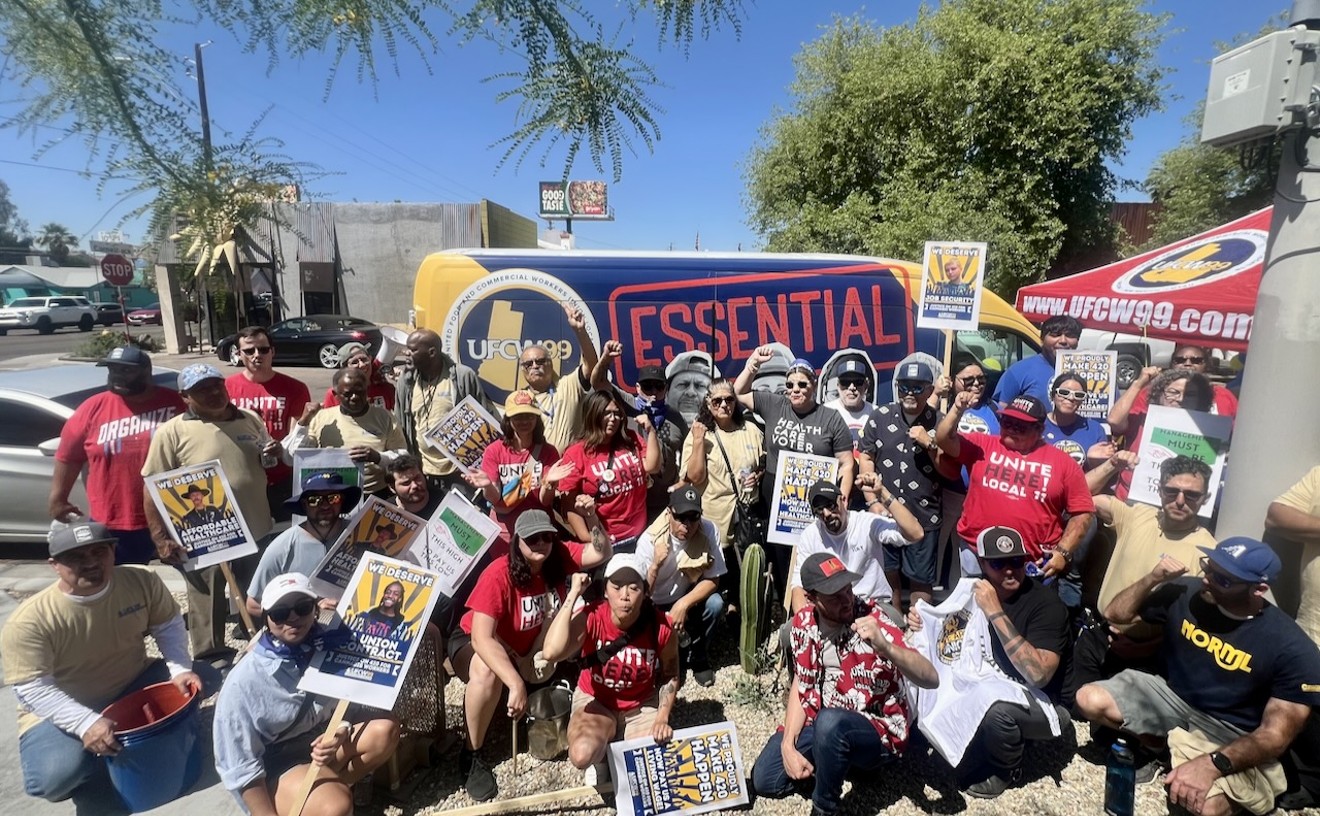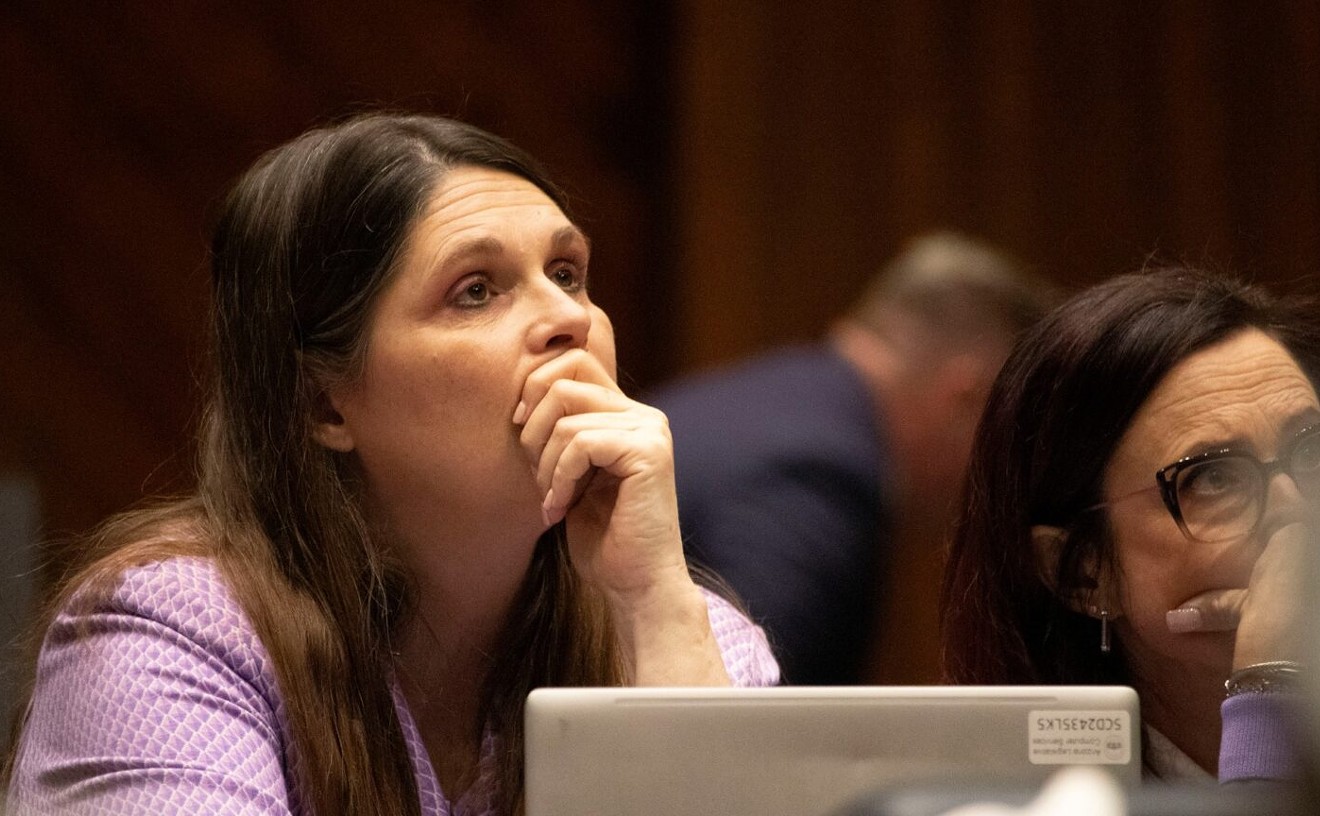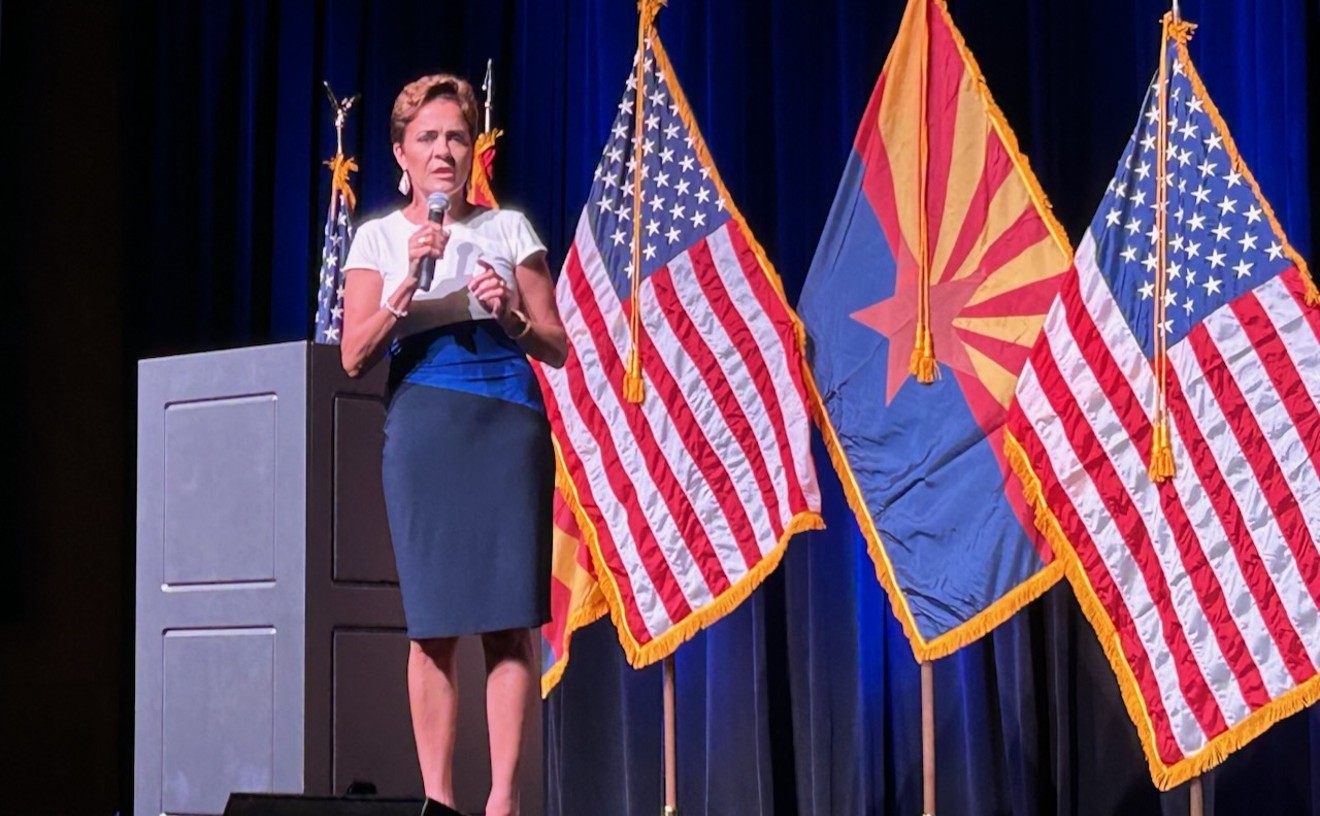Arizona has historically taken in more refugees than all but just a handful of other states, despite the efforts of Governor Doug Ducey and other Republican lawmakers to change that.
But the number of refugees being resettled here has dropped dramatically since Donald Trump became president, even though we're currently in the midst of a global humanitarian crisis.
At the end of the Obama administration, anywhere from 300 to 500 refugees were arriving in Arizona each month, with the majority coming from Cuba, Iraq, Syria, Somalia, and the Democratic Republic of the Congo.
In January, that number was cut in half. And it's continued dropping ever since. In April, only 87 new refugees arrived in Arizona — a huge drop from October 2016, when 547 people fleeing civil war, famine, or persecution in their home countries were resettled here.
According to a Pew Research Center report released this morning that analyzed U.S. State Department data, nearly every state in the country saw the number of refugee arrivals drop during this same time period. Arizona had one of the most dramatic declines, which reflects the fact that we were resettling more refugees than many other states to begin with.
What these numbers don't show is how this change hurts refugees who are already in Arizona. Last year, the state took in a record number of refugees — over 5,000 in total, according to Arizona Department of Economic Security data. Those refugees still need help learning English, finding jobs, accessing education and health care, and learning to navigate a new country and a new culture.
That role is typically filled by the four nonprofit organizations that contract with the state to serve as resettlement agencies — Catholic Charities, Lutheran Social Services of the Southwest, Arizona Immigrant and Refugee Services, and the International Rescue Committee.
But those organizations' funding is based on the number of refugees they resettle — which means they have just a fraction of the money coming in than they did a few months ago.
"Theoretically, that should work because there are less refugees coming, but there are still fixed costs that we have to cover," Connie Phillips, the executive director of Lutheran Social Services of the Southwest, says.
"It's made us reorganize our program — we’ve had to figure out how to do our work with less staff. We didn't have to do layoffs, but we did have some staff who left, and we didn't fill their positions."
Whitney Love, the chief coordinating officer at Arizona Immigrant and Refugee Services, confirmed that it has had to lay employees off, although she declined to specify how many. Catholic Charities and the International Rescue Committee couldn't be reached for comment.
Fewer employees and heavier caseloads at resettlement agencies means it will be that much harder for the thousands of refugees who arrived here in the past year to adjust to the United States after enduring unspeakable trauma back home. Lutheran Social Services hopes that volunteers will be able to fill in some of the gaps, and they've seen increased interest from the local community over the past several months.
The only problem? They don't have room in the budget to hire someone to coordinate all of those volunteers and train them on how to mentor newly arrived refugees. (They're planning on applying for a grant that would allow them to do so.)
The drop in the number of refugee arrivals can largely be attributed to the Trump administration's so-called Muslim ban, which, in addition to targeting immigrants from majority-Muslim countries, also blocked thousands of refugees from entering the country.
Trump's executive order stated that no more than 50,000 refugees would be allowed into the United States, less than half the number that had been allowed under President Obama. That limit stayed in place from January until mid-March, when it was blocked in court. During that time, the State Department resettled thousands fewer refugees than in previous months.
Nationwide, the number of refugees entering the country increased slightly in April, after the court's ruling, while remaining far below what it was before Trump took office. But that change doesn't seem to have been reflected in Arizona yet — in fact, the number of refugees arriving here dropped between March and April, though it's not clear why.
Meanwhile, the media frenzy that surrounded the so-called Muslim Ban and the ensuing attempts to challenge it in court meant that refugees who'd already arrived in Arizona found themselves at the center of a national debate. Many of Lutheran Social Services' clients — particularly those who wear the hijab — feared leaving the house because they worried about being harassed.
Now that the news cycle has moved on, things have improved, Phillips says.
"I don’t think people are as afraid as they were. It’s still a feeling, people still are a little concerned about being out there, but I think that has lessened. I haven’t gotten a phone call about how we’re bringing terrorists into the country for a few weeks, so it’s getting better for us, and I’m assuming it’s getting better for the refugees as well."
Mukhtar Sheikh, the program coordinator for the Somali Association of Arizona, has also felt the effects of the change in administration.
He's been spending more and more of his time at the offices of Representative Ruben Gallego, a Democrat, and Republican Senator John McCain, trying to get Somali immigrants reunited with their families.
Many have husbands, wives, or children living in refugee camps in Kenya, waiting to come to the United States. So far, he isn't aware of anyone whose family member's application has been rejected outright. But he notes that application process seems to be taking much longer than it used to.
Sometimes, staffers for McCain and Gallego can provide some help. Other times, there are no clear answers about why the lengthy vetting process is moving so slowly.
But by far the biggest change that he's noticed is that Somalis who travel to the United States and then request asylum, rather than applying for refugee status from overseas, are much more likely to get rejected.
"Now, almost all Somali asylum seekers are being sent back," he says. "That never happened before. I've been helping people in the community for six years, and we've never this many deportations of Somalis that are seeking asylum."
As you may have heard, Somalia is currently in the midst of what the United Nations is warning could be the worst humanitarian crisis in decades. So sending asylum-seekers back home is potentially a death sentence.
Meanwhile, people are still fleeing Syria in record numbers, as civil war continues to tear the country apart.
"We’re facing the largest number of refugees since people have been keeping track," Connie Phillips of Lutheran Social Services of the Southwest points out. "For us to say we won’t step up — we’re not responding to the humanitarian crisis. We’re walking away from a global issue, because it’s not in our backyard."
[
{
"name": "Air - MediumRectangle - Inline Content - Mobile Display Size",
"component": "18478561",
"insertPoint": "2",
"requiredCountToDisplay": "2"
},{
"name": "Editor Picks",
"component": "16759093",
"insertPoint": "4",
"requiredCountToDisplay": "1"
},{
"name": "Inline Links",
"component": "17980324",
"insertPoint": "8th",
"startingPoint": 8,
"requiredCountToDisplay": "7",
"maxInsertions": 25
},{
"name": "Air - MediumRectangle - Combo - Inline Content",
"component": "16759092",
"insertPoint": "8th",
"startingPoint": 8,
"requiredCountToDisplay": "7",
"maxInsertions": 25
},{
"name": "Inline Links",
"component": "17980324",
"insertPoint": "8th",
"startingPoint": 12,
"requiredCountToDisplay": "11",
"maxInsertions": 24
},{
"name": "Air - Leaderboard Tower - Combo - Inline Content",
"component": "16759094",
"insertPoint": "8th",
"startingPoint": 12,
"requiredCountToDisplay": "11",
"maxInsertions": 24
}
]















